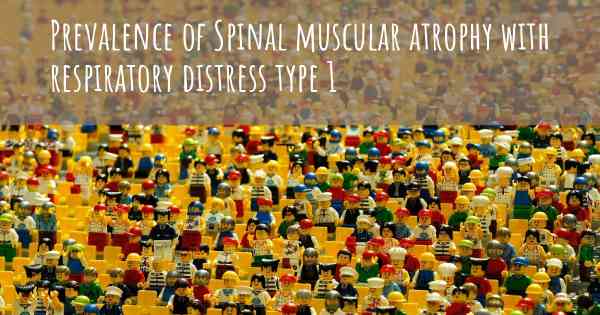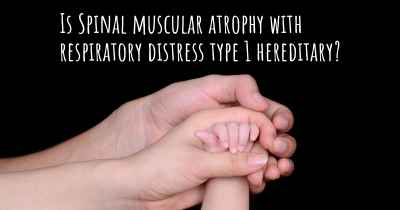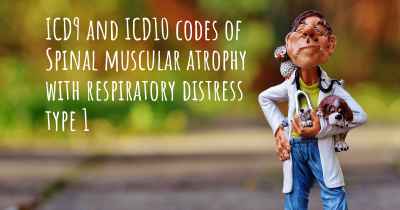18
What is the prevalence of Spinal muscular atrophy with respiratory distress type 1?
How many people does Spinal muscular atrophy with respiratory distress type 1 affect? Does it have the same prevalence in men and women? And in the different countries?

Spinal muscular atrophy with respiratory distress type 1 (SMARD1) is an extremely rare genetic disorder characterized by progressive muscle weakness and respiratory problems. It is estimated that the prevalence of SMARD1 is approximately 1 in 6 million individuals worldwide. This condition primarily affects infants, with symptoms typically appearing within the first few months of life. SMARD1 is caused by mutations in the IGHMBP2 gene and is inherited in an autosomal recessive manner. Early diagnosis and supportive care are crucial for managing the symptoms and improving the quality of life for individuals with SMARD1.
Spinal muscular atrophy with respiratory distress type 1 (SMARD1) is an extremely rare genetic disorder that affects the nerves controlling the muscles involved in breathing and movement. It is characterized by progressive muscle weakness, respiratory distress, and early onset of symptoms, typically appearing within the first few months of life.
Due to its rarity, the prevalence of SMARD1 is not well-documented. However, it is estimated to affect fewer than 1 in 1,000,000 individuals worldwide. The condition is inherited in an autosomal recessive manner, meaning that both parents must carry a copy of the mutated gene for their child to be affected.
SMARD1 is caused by mutations in the IGHMBP2 gene, which is responsible for producing a protein essential for the survival and function of motor neurons. The loss of function of this protein leads to the degeneration of motor neurons, resulting in muscle weakness and respiratory difficulties.
Early diagnosis and intervention are crucial for managing SMARD1. Treatment options are limited, and supportive care is primarily focused on addressing respiratory complications and maintaining quality of life. Research efforts are ongoing to better understand the condition and develop potential therapies.
Disclaimer: This information is provided for educational purposes and should not be used as a substitute for professional medical advice. If you suspect you or your child may have SMARD1, it is important to consult with a qualified healthcare professional for an accurate diagnosis and appropriate management.
Diseasemaps








